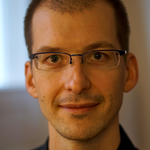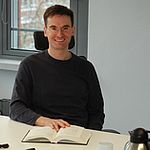The research, as envisioned, can be broadly located at the intersection of computational and geometric group theory, convex optimization and real algebraic geometry.
The study of groups through their geometric actions has a long history which has started with the fundamental work of Dehn on group presentations. In 1967 Kazhdan discovered a property of groups (known as property (T)) defined in the language of unitary actions on Hilbert spaces.
Despite somewhat obscure definition, the property proved to have intriguing consequences in various branches of mathematics (algebraic groups, ergodic theory, geometric group theory),and computer science (resilient networks using expanders, group-theoretic hash functions).
Our primary objective is to prove that Mapping Class Groups have property (T). This would solve a long-standing open problem which has acquired some notoriety in the Geometric Group Theory community. We intend to do this by combining combinatorial and representation-theoretic methods with the power of modern computers, similarly to the way we established property (T) for\(\operatorname{Out}(F_n)\).
Our secondary objectives are: to obtain lower bounds for Kazhdan constants of Chevalley groups; to remove the computer-assisted aspects of the current proof of property (T) for\(\operatorname{Out}(F_n)\); and to combine the previous two points in order to prove property (T) for Chevalley groups over a large variety of rings.
Publications
The Surface Group Conjectures are statements about recognising surface groups among one-relator groups, using either the structure of their finite-index subgroups, or all subgroups. We resolve these conjectures in the two generator case. More generally, we prove that every two-generator one-relator group with every infinite-index subgroup free is itself either free or a surface group.
Related project(s):
60Property (T)
We introduce the classes of TAP groups, in which various types of algebraic fibring are detected by the non-vanishing of twisted Alexander polynomials. We show that finitely presented LERF groups lie in the class TAP1(R) for every integral domain R, and deduce that algebraic fibring is a profinite property for such groups. We offer stronger results for algebraic fibring of products of limit groups, as well as applications to profinite rigidity of Poincaré duality groups in dimension 3 and RFRS groups.
Related project(s):
60Property (T)
We introduce the notion of quasi-BNS invariants, where we replace homomorphism to R by homogenous quasimorphisms to R in the theory of Bieri-Neumann-Strebel invariants. We prove that the quasi-BNS invariant QΣ(G) of a finitely generated group G is open; we connect it to approximate finite generation of almost kernels of homogenous quasimorphisms; finally we prove a Sikorav-style theorem connecting QΣ(G) to the vanishing of the suitably defined Novikov homology.
Related project(s):
60Property (T)
We provide a direct connection between the Zmax (or essential) JSJ decomposition and the Friedl--Tillmann polytope of a hyperbolic two-generator one-relator group with abelianisation of rank 2.
We deduce various structural and algorithmic properties, like the existence of a quadratic-time algorithm computing the Zmax-JSJ decomposition of such groups.
Related project(s):
60Property (T)
We initiate the study of torsion-free algebraically hyperbolic groups; these groups generalise, and are intricately related to, groups with no Baumslag-Solitar subgroups. Indeed, for groups of cohomological dimension 2 we prove that algebraic hyperbolicity is equivalent to containing no Baumslag-Solitar subgroups. This links algebraically hyperbolic groups to two famous questions of Gromov; recent work has shown these questions to have negative answers in general, but they remain open for groups of cohomological dimension 2.
We also prove that algebraically hyperbolic groups are CSA, and so have canonical abelian JSJ-decompositions. In the two-generated case we give a precise description of the form of these decompositions.
Related project(s):
60Property (T)
We prove that twisted ℓ2-Betti numbers of locally indicable groups are equal to the usual ℓ2-Betti numbers rescaled by the dimension of the twisting representation; this answers a question of Lück for this class of groups. It also leads to two formulae: given a fibration E with base space B having locally indicable fundamental group, and with a simply-connected fibre F, the first formula bounds ℓ2-Betti numbers b(2)i(E) of E in terms of ℓ2-Betti numbers of B and usual Betti numbers of F; the second formula computes b(2)i(E) exactly in terms of the same data, provided that F is a high-dimensional sphere.
We also present an inequality between twisted Alexander and Thurston norms for free-by-cyclic groups and 3-manifolds. The technical tools we use come from the theory of generalised agrarian invariants, whose study we initiate in this paper.
Related project(s):
60Property (T)
We construct a new type of expanders, from measure-preserving affine actions with spectral gap on origami surfaces, in each genus g⩾1. These actions are the first examples of actions with spectral gap on surfaces of genus g>1. We prove that the new expanders are coarsely distinct from the classical expanders obtained via the Laplacian as Cayley graphs of finite quotients of a group. In genus g=1, this implies that the Margulis expander, and hence the Gabber--Galil expander, is coarsely distinct from the Selberg expander. For the proof, we use the concept of piecewise asymptotic dimension and show a coarse rigidity result: A coarse embedding of either R2 or H2 into either R2 or H2 is a quasi-isometry.
Related project(s):
60Property (T)
Team Members
PhD Marek Kaluba
Researcher
Karlsruhe Institute of Technology (KIT)
marek.kaluba(at)kit.edu
Prof. Dr. Dawid Kielak
Project leader
University of Oxford
kielak(at)maths.ox.ac.uk
Prof. Dr. Roman Sauer
Project leader
Karlsruher Institut für Technologie
roman.sauer(at)kit.edu




